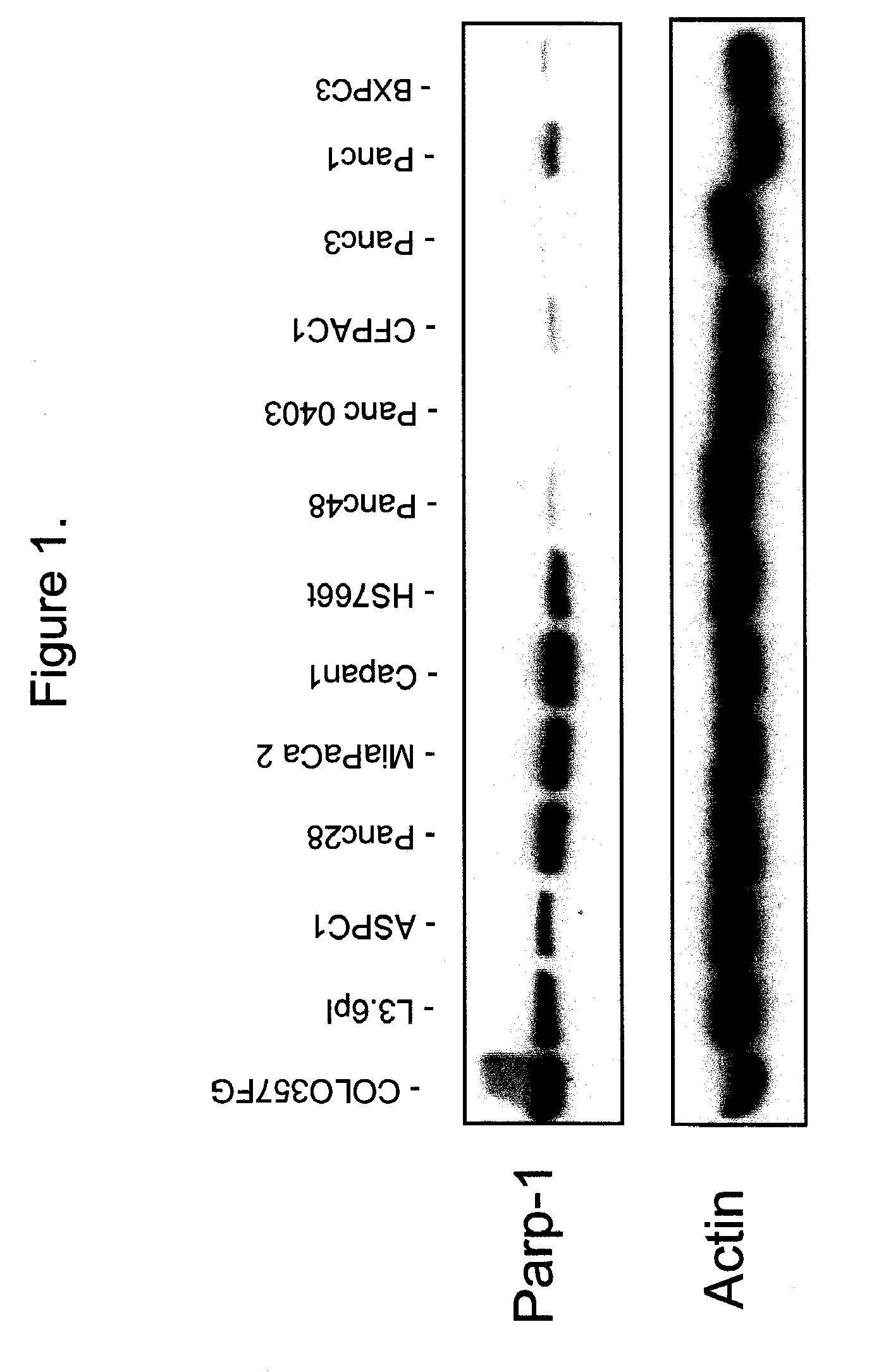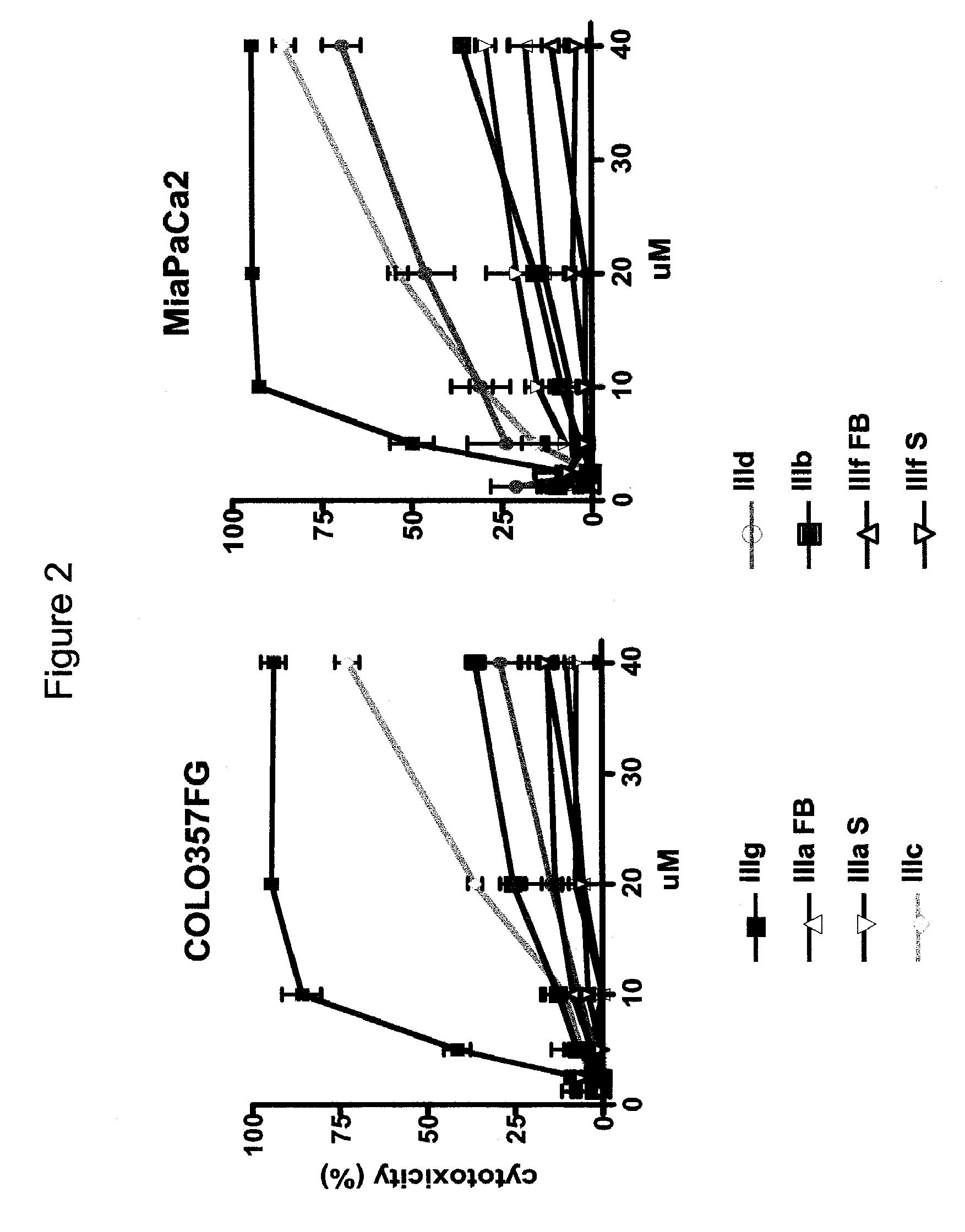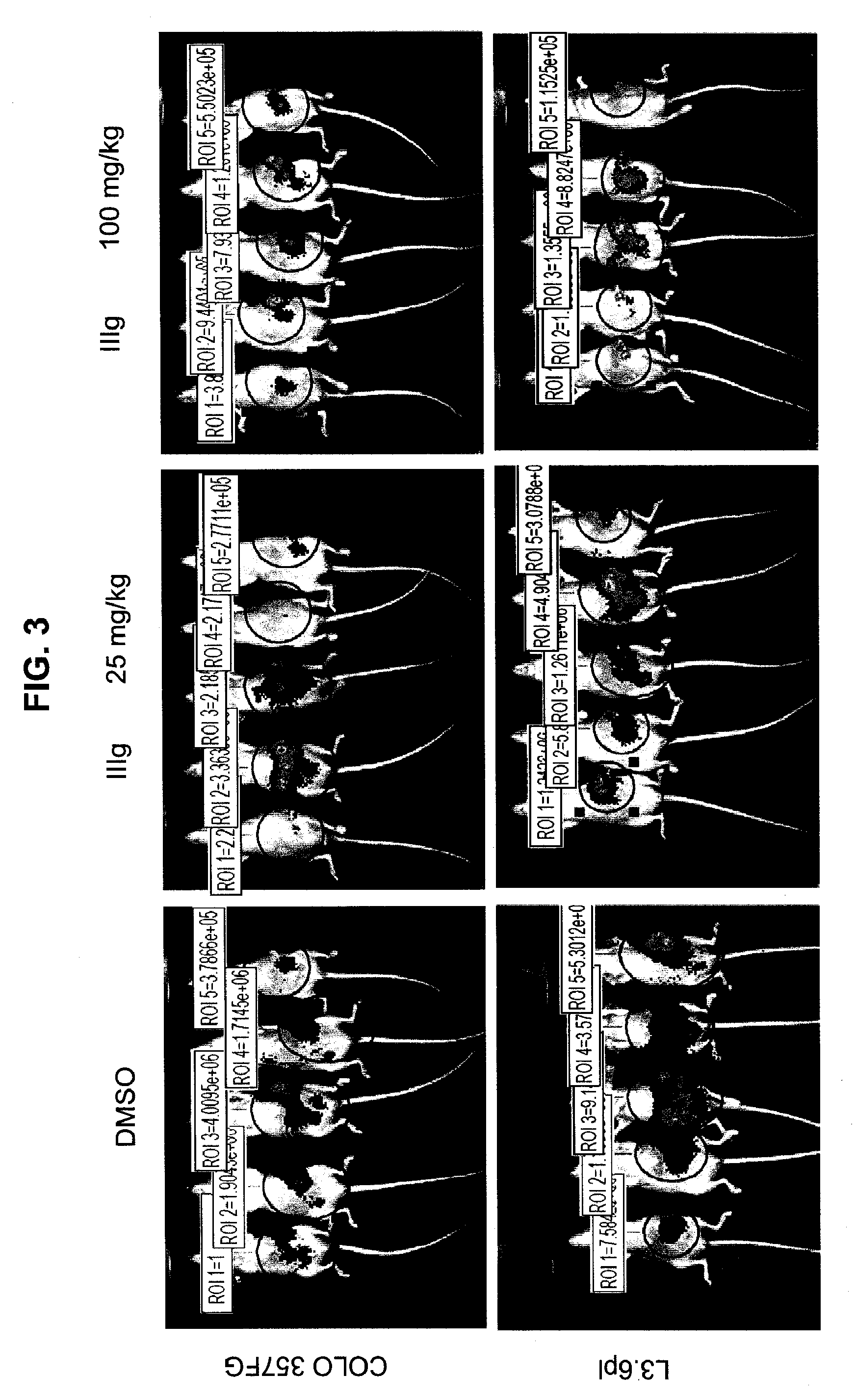Methods and compositions for the treatment of cancer using benzopyrone-type PARP inhibitors
a technology of parp inhibitors and compositions, which is applied in the direction of biocide, drug compositions, peptide/protein ingredients, etc., can solve the problems of malignant cancerous growth, serious challenges for modern medicine, and serious threat to modern society
- Summary
- Abstract
- Description
- Claims
- Application Information
AI Technical Summary
Benefits of technology
Problems solved by technology
Method used
Image
Examples
example 1
In Vitro Efficacy of the Compound of Formula IIIg (5-iodo-6-nitrocoumarin)
Materials and Methods
[0453]Test Agents—Cells are treated 24 hours after plating (Day 1) with vehicle or test agents at concentrations of 0.1 μM, 0.3 μM, 1 μM, 3 μM, 10 μM, 30 μM and 100 μM.
[0454]Tumor Cell Lines—Tumor cell lines (Table 1) are obtained from the American Type Cell Collection (ATCC, Rockville, Md.) or NCI-DCTD Tumor Repository (Bethesda, Md.) and maintained in proper growth media supplemented with 10% fetal bovine serum (FBS, NovaTech), and are maintained in specified growth media. Cells are propagated at 37° C. in a humidified atmosphere containing 5% carbon dioxide.
[0455]Cell proliferation assay—Cell proliferation is determined using BrdU chemiluminescent assay, which measures incorporation of 5-bromo-2′-deoxyuridine (BrdU) into the genomic DNA of proliferating cells. Briefly, cells are added with BrdU for 4 hours, during which time it incorporates into the DNA of dividing cells in place of thy...
example 2
Evaluation of IIIg Against the Human Carcinoma Xenografts in Nude Mice
Methods and Materials
[0465]Mice
[0466]Female athymic nude mice (nu / nu, Harlan) are 9-10 weeks old, and have a body weigh (BW) range of 18.1-27.0 g on D1 of the study. The animals are fed ad libitu water (reverse osmosis, 1 ppm Cl) and NIH 31 Modified and Irradiated Lab Diet® consisting of 18.0% crude protein, 5.0% crude fat, and 5.0% crude fiber. The mice are housed on irradiated ALPHA-dri® bed-o-cobs® Laboratory Animal Bedding in static microisolators on a 12-hour light cycle at 21-22° C. (70-72° F.) and 40-60% humidity. PRC specifically complies with the recommendations of the Guide for Care and Use of Laboratory Animals with respect to restraint, husbandry, surgical procedures, feed and fluid regulation, and veterinary care. The animal program at PRC is accredited by AAALAC International, which assures compliance with accepted standards for the care and use of laboratory animals.
[0467]Tumor Implantation
[0468]For...
example 3
Effect of IIIg on Pancreatic Cancer Cell Lines
[0500]Pancreatic Cancer Cell Line and Culture Conditions
[0501]The human pancreatic cancer cell lines are maintained in minimal essential medium supplemented with 10% fetal bovine serum (FBS), sodium pyruvate, non-essential amino acids, 1-glutamine, a two-fold vitamin solution (Life Technologies, Grand Island, N.Y.), and a penicillin-streptomycin mixture (Flow Laboratories, Rockville, Md.). The cultures are free of mycoplasma and the following pathogenic murine viruses: reovirus type 3, pneumonia virus, K virus, Theiler's encephalitis virus, Sendai virus, minute virus, mouse adenovirus, mouse hepatitis virus, lymphocytic choriomeningitis virus, ectromelia virus, and lactate dehydrogenase virus (assayed by Science Applications International Corp., Frederick, Md.).
[0502]Animals and Orthotopic Implantation of Tumor Cells
[0503]Male athymic nude mice (NCI-nu) are purchased from the Animal Production Area of the National Cancer Institute Freder...
PUM
| Property | Measurement | Unit |
|---|---|---|
| Composition | aaaaa | aaaaa |
| Level | aaaaa | aaaaa |
Abstract
Description
Claims
Application Information
 Login to View More
Login to View More - Generate Ideas
- Intellectual Property
- Life Sciences
- Materials
- Tech Scout
- Unparalleled Data Quality
- Higher Quality Content
- 60% Fewer Hallucinations
Browse by: Latest US Patents, China's latest patents, Technical Efficacy Thesaurus, Application Domain, Technology Topic, Popular Technical Reports.
© 2025 PatSnap. All rights reserved.Legal|Privacy policy|Modern Slavery Act Transparency Statement|Sitemap|About US| Contact US: help@patsnap.com



